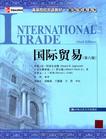国际贸易
出版时间:2009-3 出版社:中国人民大学出版社 作者:阿普尔亚德 等著,彭刚 编审,刘春生 等译校 页数:452
前言
本书从古典贸易理论、新贸易理论、贸易理论的扩展以及贸易政策四个部分系统地介绍了国际贸易理论。书中包含大量数据、图表和公式,尽可能地反映了本学科发展的前沿动态,吸收了国际贸易学领域的最新成果。 本书来源于美国英文原版教材,经编审后增加忠于原文的中文注解部分。相对于其他的国际贸易学教材,该书更具有前沿性和实用性。书中包含大量的专栏,介绍了近年来最新涌现的理论动态和现实案例分析,为读者提供了新颖全面的资料。此外,本书语言深入浅出,无论是对国际贸易学的初学者还是具有一定基础需要进一步提升的读者,这本书都是难得的好选择。 本书适合作为应用型本科或大专院校的经济或国际管理类国际经济与贸易、国际金融等专业的教材,也可作为国际贸易、国际金融等相关领域从业人员的参考用书。
内容概要
本书主要内容包括古典贸易理论、新贸易理论、其他贸易理论及扩展,以及贸易政策四大部分。第一章为全书导读,第一部分包括第二章至第四章,主要讲述了早期重商主义理论,本部分重点阐述了由重商主义向古典贸易理论的转变以及对两个国家两种商品假设的扩展。第二部分为第五章至第九章。第五章重温了微观经济学的消费者行为理论及生产者理论等分析工具。第六章至第九章主要介绍了新古典贸易理论及H-O理论,其中包含贸易提供曲线、各种贸易条件、要素禀赋理论和H-O模型及其检验。第三部分为第十章至第十二章,主要介绍了其他贸易理论及其扩展。第十章分析了后H-O贸易理论与产业内贸易,第十一章研究了对经济增长的比较静态分析及贸易的重要性。在第十二章中阐述了国际要素流动的成因及影响。第四部分包括第十三章至第十七章,主要介绍了贸易政策,其中包括贸易政策的工具及其影响,贸易保护政策的争论,经济中的政治因素与美国的贸易政策,以及经济一体化和发展中国家的国际贸易情况。
书籍目录
第1章 国际经济学的世界 引言 商品贸易的本质 世界服务贸易 国家间经济依存度的转变 第一部分 古典贸易理论 第2章 早期的国际贸易理论——由重商主义向古典贸易理论的演进 引言 重商主义 早期古典贸易理论对重商主义的质疑 第3章 古典贸易理论:大卫?李嘉图和他的比较优势理论 引言 李嘉图模型的基本假定 李嘉图的比较优势理论 比较优势与贸易总利得 用生产可能性曲线表示的李嘉图模型 关于比较优势的一些经验性结论 第4章 对古典贸易模型的扩充及验证 引言 用货币表示的古典贸易模型 工资率的束和汇率约束 多种贸易商品的情况 运输费用 多国贸易模型 对古典贸易模型的评价第二部分 新贸易理论 第5章 新贸易理论——基本分析工具的介绍 引言 消费者行为理论 生产理论 埃奇沃斯盒状图和生产可能性边界 第6章 新贸易理论中的贸易利得 引言 封闭市场的均衡 开放经济假设的引入 贸易发生的必要条件 分析中的重要假设 第7章 贸易提供曲线和贸易条件 引言 一国的贸易提供曲线 用提供曲线表示的贸易均衡 贸易提供曲线的移动效果 贸易提供曲线的弹性 各种贸易条件 第8章 贸易的基础——要素禀赋理论和赫克歇尔一俄林模型 引言 供给、需求与国内价格 要素禀赋与赫克歇尔一俄林理论 赫克歇尔一俄林理论的合理性 第9章 要素禀赋理论的实证分析 引言 里昂惕夫之谜 对里昂惕夫之谜的解释 对赫克歇尔一俄林理论的进一步检验 赫克歇尔一俄林理论与收入不均第三部分 贸易理论的扩展 第10章 后H—O贸易理论与产业内贸易 引言 后H一0贸易理论 产业内贸易 第11章 经济增长与国际贸易 引言 经济增长的贸易效应分类 经济增长源泉与生产可能性边界 …… 第12章 国际要素流动第四部分 贸易政策 第13章 贸易政策工具 第14章 贸易政策的影响 第15章 对保护主义贸易政策的争论 第16章 经济的政治因素与美国的对外贸易政策 第17章 经济合作 第18章 国际贸易与发展中国家
章节摘录
Although the Classical model seems limited in todays complex production world, economists have been interested in the extent to which its general conclusions are realized in international trade. In particular, economists have focused on the link between relative labor productivity, relative wages, and the structure of exports. One of the earliest empirical studies was conducted by G. D. A. MacDougall in 1951. In this classic study, the relative export performance of the United States and the United Kingdom was examined, using the export condition utilized throughout this chapter. MacDougall wanted to see if export performance was consistent with relative labor productivities and wage rates in the two countries. He argued that, relative to the United Kingdom, the United States should be more competitive in world markets whenever its labor was more productive than that of the United Kingdom, after taking into account wage rate differences. Another way to state this is that the value of U.S.commodity exports should be greater than that of U.K. commodity exports whenever the ratio of labor productivity in the United States to that in the United Kingdom in that industry is greater than the ratio of wages between the United States and the United Kingdom (i.e., the ratio of labor input/unit in the United States to that in the United Kingdom is less than WuK/Wus). Whenever the ratio of U.S. to U.K. productivity in a given industry is less than the ratio of U.S. to U.K. wages, the United Kingdom should dominate in exports of the good. The early results of MacDougall and later studies by Stern (1962) and Balassa (1963) con firmed the initial hypothesis. Some of MacDougalls early findings are conceptually repre sented in Figure 1. The relative productivity of more than 20 exporting industries in each of the two countries is plotted on the vertical axis; the relative volume of individual industry exports is plotted on the horizontal axis. In 1937, U.S. wages were on average twice those of the United Kingdom. A horizontal line is drawn intersecting the vertical axis at the value of 2. If a vertical line is now drawn intersecting the horizontal axis at a value of 1 (as a dividing line between U.S. dominance of exports and U.K. dominance of exports), four quadrants are formed. If the basic thrust of the Classical model holds, U.K. dominant exports should lie in the lower left-hand quadrant and U.S. dominant exports should lie in the upper right-hand quadrant. You can see that the empirical results tend to confirm the Classical prediction.
图书封面
评论、评分、阅读与下载
用户评论 (总计5条)
- 价位适合,质量值得肯定!看现在的价格,比当时买的时候高了两块钱,书的质量不用挑剔,现在正用,满意!
- 五邑大学教材
- 还没读,包装不错,妹妹买来看的
- 是本很好的教材 虽然英语看起来很累 但内容是很简单的
- 可惜是英文的,看得一沓糊涂,英文水平过八级的,可以试下。
推荐图书
- 物权法新论
- 医学影像图像处理
- 超声心动图学
- 刑事诉讼法
- eBay Business All-in-One For Dummies,2 edition eBay大全,第2版
- 古代汉语
- 电影指南 2009LENOARD MALTIN’S 2009 MOVIE GUIDE2009
- 数控机床编程与操作切削技术
- 北京企业发展报告2008
- 投资建设三十年回顾
- 儿童珠心算2
- 现代项目管理教程
- 薪酬管理与公平分配
- 现代大学功能和创新文化研究
- 生态经济协调发展思想研究
- 公共经济学
- 让孩子一次读完4部经典童话
- 《毛泽东思想和中国特色社会主义理论体系概论》演讲录
- 体育绘图
- 从异乡到异乡
- 对话鲁迅
- 从辩护到审度
- 圣歌里的芭蕉箐
- 2009年全国各类成人高考
- 2009年全国各类成人高考
相关图书
- 中华人民共和国民事诉讼法
- 第四届两岸经贸文化论坛文集
- 中华人民共和国刑事诉讼法
- 晋察冀边区革命遗址通览-晋察冀边区革命丛书
- 日语“体”的研究
- 感动那些曾让亿万人流泪的真情故事
- 感悟
- 破产法
- 历史学理论与方法
- 油库设计与管理
- 德语语音
- 新北京
- 中华人民共和国刑法
- 关于日语复合动词的习得研究
- 湖南古印萃珍
- 国内外木制品家具技术法规与标准
- 人气室内犬选择与饲养
- 中华人民共和国城市房地产管理法
- 俄汉语体时系统研究
- 新编研究生英语听说教程
- 中国十大宪政事例研究
- 中华人民共和国全国人民代表大会和地方各级人民代表大会选举法
- 中华人民共和国宪法(新旧对照本)
- 中华人民共和国道路交通安全法
- 基础教育课程改革导论
